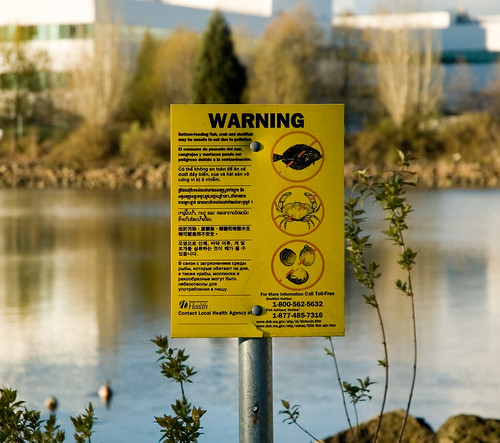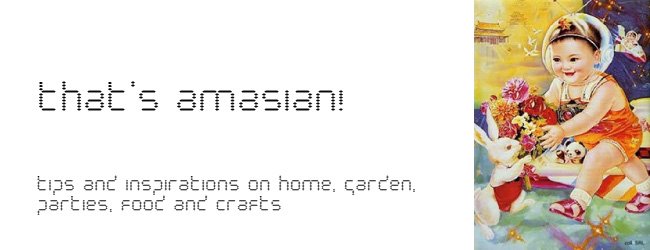
Most Seattleites can rattle off the city’s famous, iconic waterways — Elliott Bay, Lake Washington, Lake Union … but asking about Seattle’s hometown river, and how to get there, is a head-scratching exercise. The fact is that there is a reason the Duwamish River isn’t a favorite recreation destination. Years of neglect and its location right next to heavy industrial areas in South Seattle have resulted in high levels of pollution and lost natural areas. So much so, that the federal government has designated the Duwamish a Superfund site.
The neighborhoods surrounding the Duwamish River are largely low-income, diverse communities burdened with unusually high exposures to air, land and water pollution and health stressors such as lack of access to healthy food and green/open space for physical activity. The area has King County’s highest asthma hospitalization rate and ranks among Seattle’s highest diabetes rates.
Despite the heavy pollution, seafood and wildlife are still present in the area, including rockfish, perch, clams, Dungeness crab and salmon. Salmon are safer because they spend most of their lives in the ocean, but others are loaded with cancer-causing PCBs, arsenic and dioxin, chemicals that can be particularly harmful to pregnant women, nursing mothers and children. Although there are public health advisories against eating seafood from the Duwamish, an untold number of immigrants continue to fish and eat seafood from the river.
“We know that a lot of people who are fishing here are Asian Pacific Islanders and Hispanics, who fished in their home country and want to fish here. That’s why we want to raise awareness between the link between contamination and eating fish,” says Renee Dagseth community involvement coordinator with the Environmental Protection Agency (EPA).
That’s one of the reasons why the EPA, the Washington Department of Health and the Duwamish River Cleanup Coalition puts on the Duwamish River Festival every year, as a way to both educate the community on the risks of eating contaminated seafood, and demonstrate cleanup progress. This year, the Aug. 27 festival saw over 1,000 people come and partake in the festivities. In addition to the festival, the state Department of Health posts warning signs in eight languages, including Vietnamese, Korean and Chinese.
Despite all of these efforts, people still regularly catch and eat seafood from the river. Some may not know or understand the pollution risk, while others may be low-income and simply can’t afford to buy seafood. Washington Department of Fish and Wildlife officials have revealed that some APIs may be subsistence fishing without a license, so are reluctant to admit the seafood they’ve caught. Distrust of government officials is also higher among immigrant communities.
Given that higher numbers of APIs and other minorities eat this contaminated seafood, there is a higher risk of these populations developing health problems associated with exposure to these toxic chemicals. Those health problems include increased risk of a number of cancers, including liver, kidney, prostate and breast cancer, linked with PCB exposure. The more contaminated seafood one eats, the greater these health risks become. Although the government doesn’t have any toxicology studies determining that these populations are in fact contaminated with higher levels of harmful, toxic chemicals, they’ve held several community meetings with Filipino, Vietnamese, Hmong and Lao groups, who have admitted to eating seafood from the river.
Many API populations eat larger amounts of seafood because it’s central to their native cuisine, and furthermore, APIs are more likely to eat the parts of the seafood that carry toxins — such as the liver and the head. Although government officials may not be able to tell people to not eat seafood, they are attempting to give them safer options. For example, removing the skin, fat and internal organs of the fish before cooking, not eating the guts of crabs, and limiting portion size and number of seafood servings per week.
“My family doesn’t fish here because we heard a lot of stuff about seafood at the Duwamish being polluted,” says Som Phimmachack, a volunteer with the Duwamish River Cleanup Coalition. “But if they get this place cleaned up to par, and Boeing keeps its word, I think people will come back, especially the elder Asians, because I think they’d really love to be able to fish here.”
That vision for a healthy Duwamish is something that the Duwamish River Cleanup Coalition would like to share with a larger majority of Seattleites, so that more citizens can take pride in Seattle’s hometown river, volunteer for the cause and take an active part in commenting on the EPA’s new cleanup plan.
“How much the river gets cleaned up will have a huge impact on whether it’s safe for people to start fishing again,” says the Duwamish River Cleanup Coalition’s BJ Cummings. “EPA needs to hear from people who now do or want to be able to fish in the river in the future, or the cleanup won’t go far enough to protect them.” To help the fishing communities participate and be heard, the Coalition hires multi-lingual interpreters and is launching the Healthy Communities Project to help identify and address health issues.
Want to get Involved?
Duwamish Valley Healthy Communities Project Kick-Off Event: November 10, 6 – 9 p.m. Location TBA. See www.duwamishcleanup.org for more information. To request a boat tour of the river, contact Alberto@duwamishcleanup.org.Multi-lingual tours are available to groups upon request.


 I grew up in a small town called Longmeadow, a white chapeled town in western Massachusetts withpre-Revolutionary War roots and a population of about 15,000. My parents moved there for the schools, after my dad got a job as a chemical engineer at Monsanto. They decided it was a good place to raise children — away from the crime of the big city — but also away from any strong notions of culture. We became one of the only Chinese families in the town.
I grew up in a small town called Longmeadow, a white chapeled town in western Massachusetts withpre-Revolutionary War roots and a population of about 15,000. My parents moved there for the schools, after my dad got a job as a chemical engineer at Monsanto. They decided it was a good place to raise children — away from the crime of the big city — but also away from any strong notions of culture. We became one of the only Chinese families in the town.
